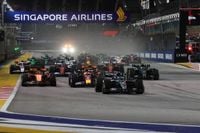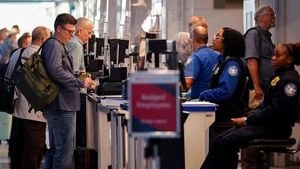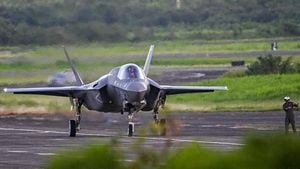The Formula 1 driver market is always a swirling cauldron of speculation, but as the 2025 season barrels toward its conclusion, the uncertainty surrounding the 2026 grid has reached a fever pitch. With six seats still technically up for grabs and some of the sport’s most storied teams weighing their options, fans and insiders alike are left wondering: Who will land where, and what does it mean for the future of F1?
At the heart of the intrigue sits Mercedes, a team accustomed to stability but now navigating a period of transition. After Lewis Hamilton’s high-profile move to Ferrari, the Silver Arrows handed the keys to their prized prospect, Kimi Antonelli. The Italian teenager was always going to face a steep learning curve, but even his most ardent supporters might not have predicted just how rocky his rookie campaign would be. For team principal Toto Wolff and the rest of the Mercedes brass, however, Antonelli’s year has been less about results and more about resilience.
“I felt really good in the car and just a bit disappointed because the potential was higher,” Antonelli admitted after a recent fifth-place finish in Singapore. The comment, delivered with a touch of self-criticism, reflects the very mentality that has Mercedes convinced they’ve unearthed a future star. Despite a European swing marred by burnout and four DNFs, Antonelli’s flashes of brilliance—including a podium in Canada and a fourth-place debut in Melbourne—have kept optimism high in Brackley. He’s out-qualified George Russell, his more experienced teammate, three times in 18 Grands Prix and three Sprints, but has yet to finish ahead of Russell in any race format. Still, the team’s faith remains unwavering.
Russell, meanwhile, has emerged from Hamilton’s shadow in spectacular fashion. His pole-to-flag victory at the 2025 Singapore Grand Prix marked his second win of a season that has seen him solidify his credentials as a true team leader. With 237 points compared to Antonelli’s 88, Russell’s consistency and pace have been a bright spot in a year of transition for Mercedes. Negotiations to retain both drivers for 2026 have dragged on for months, but all signs point to the duo returning to the grid in silver next season.
Elsewhere, Alpine is quietly firming up its own lineup. Franco Colapinto appears to have the inside track on a 2026 seat, with reserve driver Paul Aron still in the mix. Flavio Briatore, never one to mince words, has made it clear that the team isn’t considering outside options. Stability seems to be the order of the day in Enstone, though the final decision has yet to be made public.
But perhaps the juiciest drama is unfolding at Red Bull. Max Verstappen, the team’s talisman and four-time world champion, has put to bed rumors of a Mercedes switch by committing to at least another season with the Milton Keynes outfit. The real question is who will occupy the seat alongside him. With Isack Hadjar tipped for a promotion, the futures of Yuki Tsunoda and Liam Lawson hang in the balance, and the rise of junior sensation Arvid Lindblad adds another layer of complexity.
Journalist Scott Mitchell-Malm summed up the prevailing sentiment during a recent appearance on The Race F1 Podcast: “I personally don’t think [Tsunoda] will be there next year. I just don’t think he’s done enough for what he had to do.” It’s a harsh assessment, but one rooted in the brutal math of F1. Tsunoda has managed just 20 points this season, with no wins, poles, or podiums. Verstappen, by contrast, has racked up a staggering 273 points, four wins, and six poles. The gap in raw results is glaring, but as Mitchell-Malm points out, Tsunoda has occasionally shown flashes of pace, getting closer to Verstappen over one lap than any teammate since Daniel Ricciardo at certain tracks.
Still, the Japanese driver’s Achilles’ heel has been his race starts. Tsunoda loses more positions on the first lap than any other driver on the grid, often finding himself mired in the midfield after qualifying outside the top ten. Even when his race pace improves—as it did in Singapore, where Red Bull was reportedly pleased with his progress—he’s already playing catch-up. With Red Bull’s slight drop-off in form compared to 2023 and the grid as tight as ever, those early setbacks have proved costly.
The situation is further complicated by the Red Bull junior pipeline. Isack Hadjar’s strong performances have put him in prime position for a race seat, while Helmut Marko’s admiration for Arvid Lindblad suggests the team is eager to inject fresh blood. That leaves Tsunoda and Lawson battling not just for a Red Bull seat, but potentially for a place anywhere on the grid in 2026. After five seasons in F1, Tsunoda’s future hangs in the balance, and moving him to the Racing Bulls might only serve to block the progress of emerging talent.
Speaking of Racing Bulls, the team’s lineup remains a mystery, with both seats unconfirmed. The dominoes will start to fall once Red Bull makes its decision, but for now, all eyes are on the energy drink giant’s next move. Will they stick with experience, or roll the dice on youth?
Elsewhere on the grid, familiar faces are set to return. Ferrari boasts a blockbuster pairing of Charles Leclerc and Lewis Hamilton, while McLaren’s dynamic duo of Lando Norris and Oscar Piastri have both impressed. Audi, Cadillac, Haas, Aston Martin, and Williams have largely settled their lineups, with only a few question marks remaining—most notably at Mercedes, Red Bull, and Racing Bulls.
It’s a fascinating game of musical chairs, with every decision carrying huge implications not just for 2026, but for the long-term trajectory of the sport. The influx of young talent, the shifting allegiances of established stars, and the ever-present pressure to perform ensure that nothing is set in stone until the contracts are signed and the ink is dry.
As the paddock prepares for the final rounds of the 2025 season, speculation will only intensify. Will Mercedes’ faith in Antonelli be rewarded with a breakthrough sophomore campaign? Can Tsunoda silence his critics and secure his place among the elite? And who will emerge as Verstappen’s partner in the Red Bull garage? For now, the answers remain tantalizingly out of reach—but one thing’s for sure: the 2026 Formula 1 grid promises to be one of the most intriguing in recent memory.
With so many seats still in play and the stakes higher than ever, the drama shows no signs of letting up. Buckle up, F1 fans—the silly season is just getting started.




